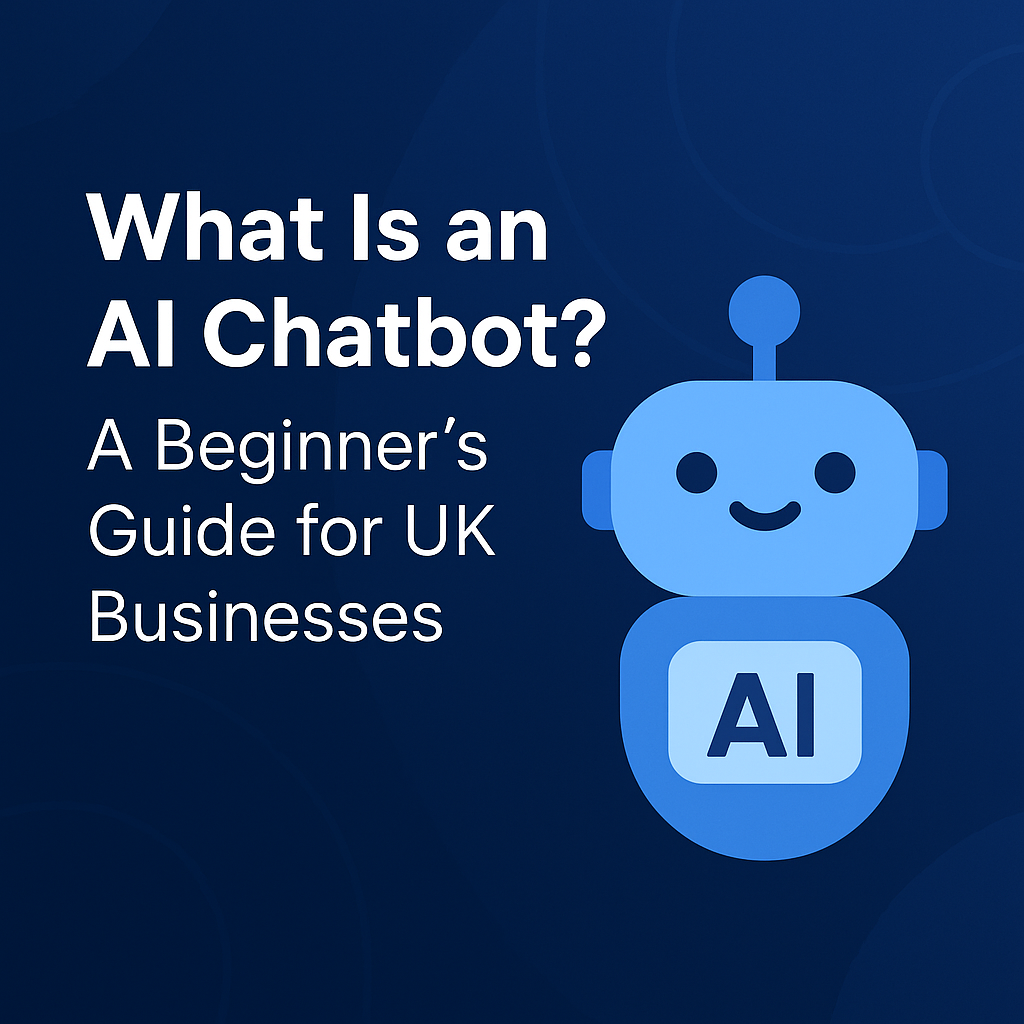In today’s digital-first world, customer expectations are rising — and businesses must adapt quickly to stay ahead. One of the most effective tools helping companies meet these expectations is the AI chatbot. Whether you’re running a small business or managing operations for a larger enterprise, understanding how AI chatbots work — and what they can do — is a smart move.
This beginner’s guide explains everything UK business owners need to know about AI chatbots: what they are, how they work, their benefits, and how to get started.
What Is an AI Chatbot?
An AI chatbot is a computer program that uses artificial intelligence to simulate human conversation. Unlike traditional rule-based bots, AI chatbots use natural language processing (NLP) and machine learning (ML) to understand user queries and provide relevant, intelligent responses.
In simple terms, they allow businesses to interact with customers in real time — 24/7 — without needing a human on standby.
How Do AI Chatbots Work?
AI chatbots rely on a combination of technologies to function effectively:
Natural Language Processing (NLP): Understands and interprets the user’s input.
Machine Learning (ML): Learns from previous interactions to improve over time.
Integration Tools: Connect with systems like CRMs, booking tools, or databases to carry out tasks.
For example, a customer might ask, “When will my order arrive?” An AI chatbot can pull delivery information from your system and respond accurately within seconds — no human intervention needed.
Key Benefits of AI Chatbots for UK Businesses
Implementing an AI chatbot can deliver powerful results. Here’s why businesses across the UK are investing in chatbot technology:
1. 24/7 Customer Support
AI chatbots work around the clock, providing instant answers to common queries even outside office hours.
2. Cost Savings
Automating customer service reduces the need for large support teams, cutting operational costs significantly.
3. Improved Customer Experience
Customers get fast, helpful responses — leading to higher satisfaction and loyalty.
4. Increased Efficiency
By automating repetitive tasks, your team can focus on high-value work that drives growth.
5. Scalability
Chatbots handle multiple conversations simultaneously, making it easier to grow without scaling your team linearly.
Use Cases: How UK Businesses Are Using AI Chatbots
AI chatbots are already transforming industries across the UK. Here are a few examples:
E-commerce: Automating FAQs, tracking orders, and recommending products.
Professional Services: Scheduling appointments and qualifying leads.
Real Estate: Handling enquiries and booking viewings automatically.
Healthcare: Sharing basic medical info or appointment slots securely.
Hospitality: Managing bookings and customer service for hotels or restaurants.
According to a report by McKinsey & Company, businesses that effectively implement automation can reduce operational costs by up to 30%, while improving customer engagement and satisfaction.
AI Chatbots vs. Traditional Chatbots
| Feature | Traditional Chatbot | AI Chatbot |
|---|---|---|
| Response Method | Pre-set rules and scripts | Learns from data and context |
| Language Understanding | Basic keywords | Advanced NLP |
| Adaptability | Fixed | Dynamic and evolving |
| User Experience | Limited | Natural and conversational |
If your business still relies on a traditional chatbot or none at all, upgrading to an AI-powered solution is a worthwhile step forward.
Choosing the Right AI Chatbot for Your Business
Not all chatbots are created equal. When choosing an AI chatbot provider, consider the following:
Customisation: Can it be tailored to your brand and processes?
Integration: Will it connect with your existing systems (e.g. CRM, email)?
Ease of Use: Is it easy for your team to manage and update?
Support: Do you get ongoing technical support and training?
At Launchly, we build fully customised AI chatbots tailored to your unique business goals — helping you deliver faster, smarter service across channels.
Getting Started with AI Chatbots
Starting with AI doesn’t need to be daunting. Here’s how to begin:
Define Your Objectives: Identify what you want your chatbot to achieve (e.g. reduce support tickets, capture leads).
Choose the Right Partner: Work with an AI automation agency like Launchly that understands your business.
Pilot and Optimise: Start small, monitor performance, and optimise based on user feedback.
Train Your Team: Ensure your staff knows how to manage and benefit from the chatbot.
If you’re unsure where to start, we’ve created a free resource to help.
👉 Download your free AI Toolkit now
This guide covers practical tips, use cases, and a roadmap for implementing AI in your business — including chatbot deployment.
The Future of AI Chatbots
As AI technology advances, chatbots are becoming more human-like, more useful, and more strategic. With voice assistants, sentiment analysis, and hyper-personalisation on the horizon, early adoption can give your business a clear competitive edge.
According to PwC, 52% of UK business leaders say they’re already investing in AI to gain efficiencies and improve service [source]. AI chatbots are one of the easiest, most cost-effective ways to start that journey.





